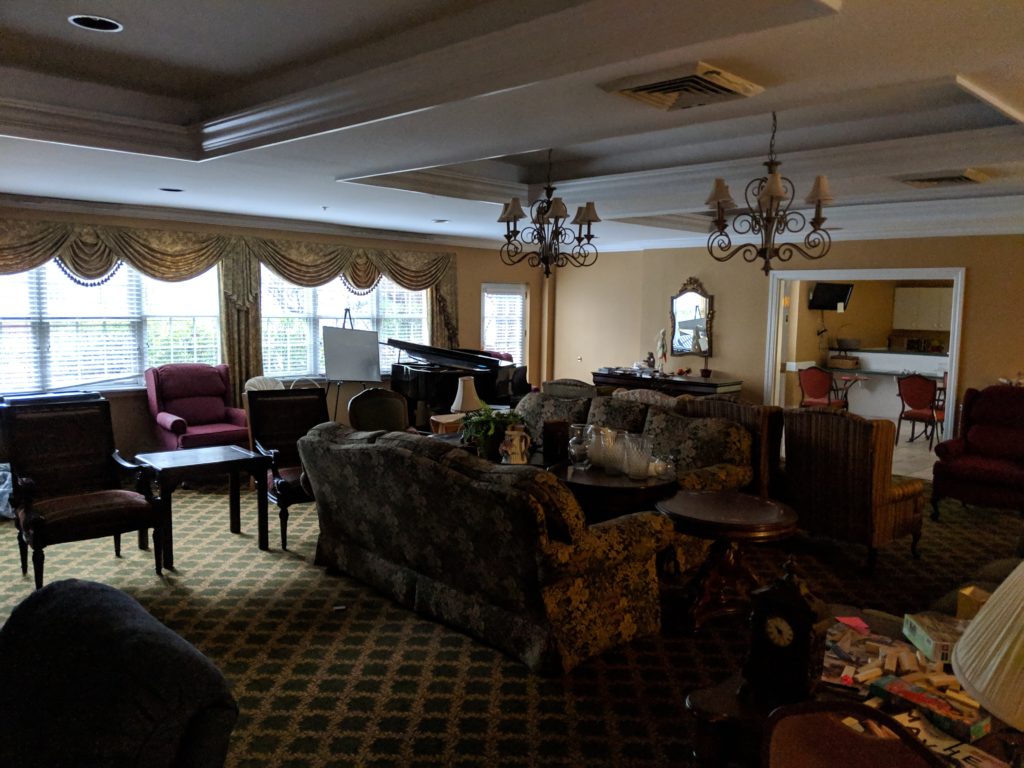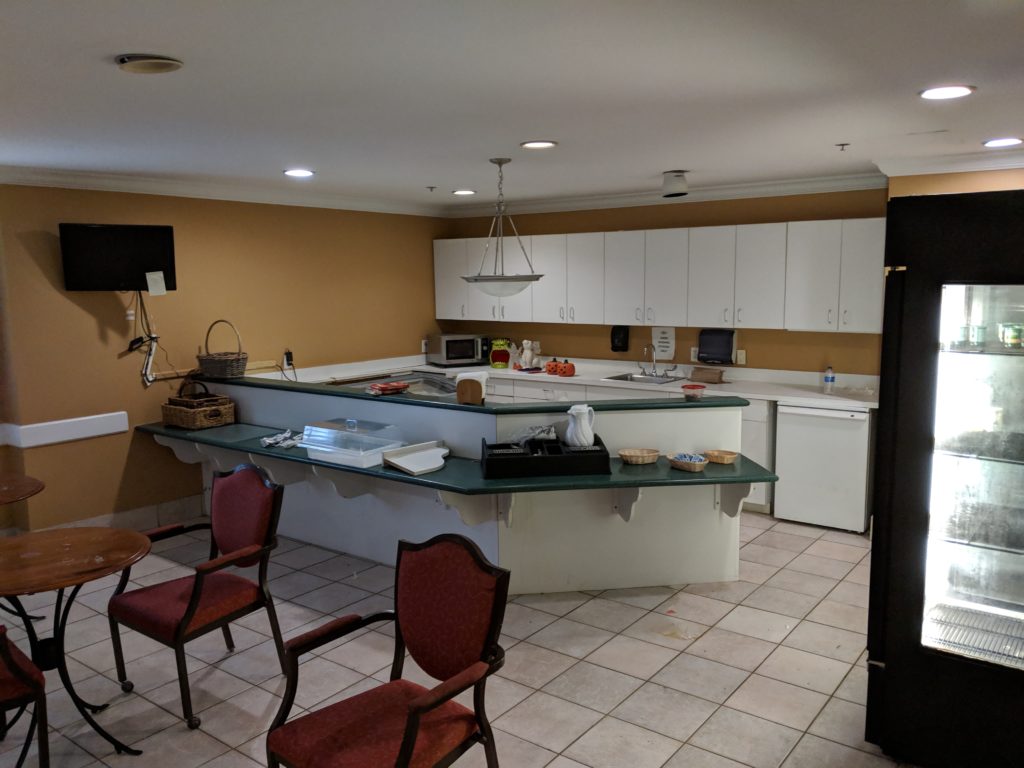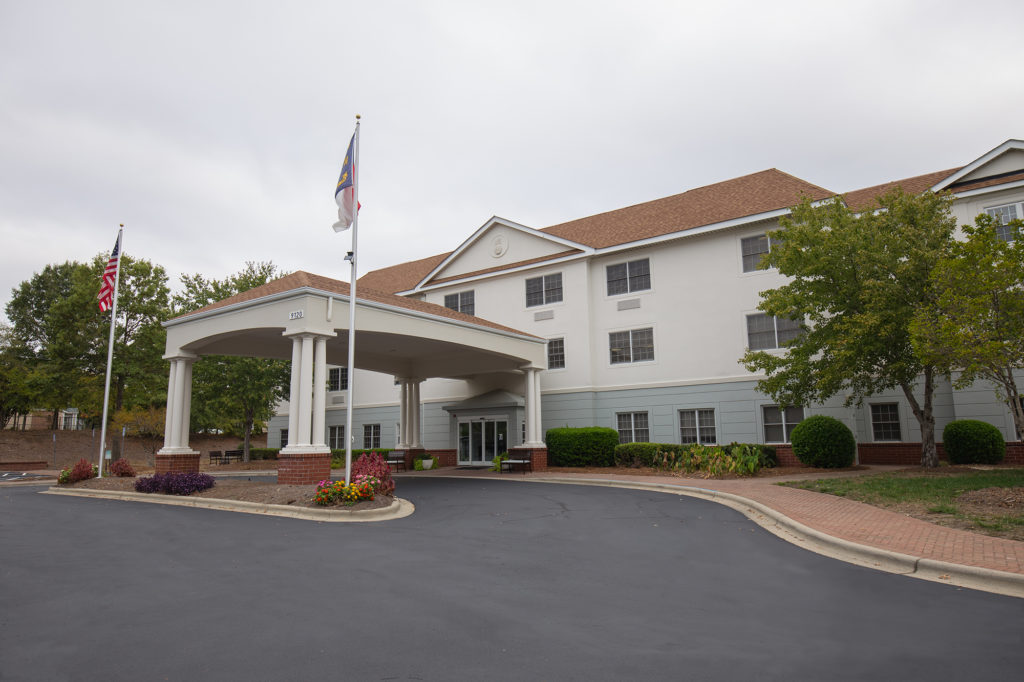Unpaid food and utility vendors. Lapsed registration and insurance. Uninhabitable rooms. Employee payroll issues. Rent checks left undeposited.
National Health Investors (NYSE: NHI) CEO Eric Mendelsohn started hearing these kind of complaints from residents and employees at three of the company’s communities last year.
“It was just hard to believe,” Mendelsohn recalled in an interview with Senior Housing News.
But Mendelsohn, along with others at the Murfreesboro, Tennessee-based real estate investment trust (REIT) he leads, would soon start to learn the extent of those complaints. And in the process, enter into a long and complicated court battle with a former operating partner and tenant, an affiliate of Dallas-based private equity firm East Lake Capital Management called SH Regency Leasing.
NHI previously leased out three communities to Regency — in Indianapolis; Charlotte, North Carolina; and Madison, Tennessee — totaling a small percentage of the REIT’s annualized cash revenue.
East Lake also currently sublets two continuing care retirement communities (CCRCs) to another operator, Watermark Retirement Communities, under the moniker EL FW Intermediary I — an arrangement sometimes known as a “sandwich lease.” That arrangement is still ongoing and expected to continue, as Watermark, not East Lake, is the primary manager of those communities.
Regency, EL FW and East Lake are themselves part of larger, more intricate web that by one judge’s analysis numbered as many as 75 business entities. The company and its affiliates currently have interests in eight assisted living communities, including two in Oklahoma.
Those entities are headed up by Andrew White, a former managing director with Fortress Investment Group who started working with NHI before former CEO Justin Hutchens left his post in 2015.
East Lake’s legal woes also extend beyond its relationship with the REIT. In July, the state of Vermont appointed a permanent receiver to manage four former East Lake properties in St. Albans and South Burlington after allegations of dwindling food supplies, unpaid vendors and staffing shortages came to light about a year ago.
The exact story of why East Lake’s operations deteriorated to the point of receivership remains murky. And White denied all claims of mismanagement by East Lake when reached by Senior Housing News Thursday.
“The idea that we wouldn’t be making payroll or food service payments defies logic and reason,” White told SHN.
Court documents tell a different story. In January, the state of Vermont detailed how another affiliate of East Lake, ECLM Pillsbury Management, allegedly neglected to pay vendors, adequately staff its buildings and cash resident checks for a period of several months.
“At all facilities, the residents were actually experiencing serious mental harm,” the Jan. 25 filing from the Vermont Department of Disabilities Aging and Independent Living reads. “They no longer lived in a safe, protective reliable home where they could trust that they would be properly cared for.”
Earlier this year, White was also sued in Delaware by several investors of a related East Lake entity, ELCM Healthcare Real Estate Fund LP. The suit, in which the investors alleged contractual and fiduciary breaches, ultimately ended in a judge’s order to dissolve that business entity.
Delaware Chancery Judge Sam Glasscock III wrote that, during an evidentiary hearing for that suit in February, White provided “concerning” testimony that was “often rambling and distorted.”
“My conclusion that Mr. White is unwilling or unable to conduct this business has only been reinforced by his actions in contempt of this court thereafter,” Delaware Chancery Judge Sam Glasscock III wrote in an Aug. 7 memorandum opinion ordering the dissolution of ELCM Healthcare Real Estate Fund LP.
With regard to NHI, the legal picture is still coming into view. East Lake first filed suit against the REIT in Dallas last June, alleging that NHI defamed the company in an earnings call. The REIT, which had been preparing its own lawsuit by that time, countersued. Litigation is still ongoing.
In previous court filings, East Lake accused NHI of “strong-arm tactics to renegotiate the leases on better terms” as part of “wrongful efforts to conceal its poor financial performance.”
What is clear is that NHI believes East Lake’s properties fell into extreme distress last year, and so the REIT turned to the courts in a bid to bring in new operators. NHI eventually reached an agreement with East Lake last December that allowed it to transition its three properties to new operators.
“The trauma inflicted by the previous operator was severe, and we cannot give you a firm assessment on how quickly these properties will return to the form of cash flow,” Mendelsohn said of the properties during the REIT’s Q4 2018 earnings call, which took place in February 2019.

With litigation ongoing, the future for East Lake is unclear. But the future for the three communities in NHI’s portfolio appears to be brighter, owing to heavy lifting on the part of the REIT and the two operators brought in to flip the properties, Franklin, Tennessee-based Vitality Living and Charlotte, North Carolina-based Senior Living Communities (SLC).
‘This is an emergency’
Vitality Living CEO Chris Guay got the call from NHI late in 2018. The REIT was looking for an operator to help turn around Maybelle Carter, a 135-unit assisted living and memory care community located on the former estate of Johnny Cash’s mother-in-law about 10 minutes north of Nashville.
Both Guay and Mendelsohn had worked at Emeritus — which merged with Brookdale Senior Living (NYSE: BKD) in 2014 to create the nation’s largest senior living operator — and thus had a prior relationship.
“They said this is an emergency, we have to get this building flipped,” Guay told SHN. “We took over full operations by mid-December.”
As in Vermont, East Lake allegedly hadn’t cashed residents’ rent checks for some time at any of its NHI properties.
“When we took over the buildings, we literally found thousands of uncashed rent checks,” Mendelsohn said.
When asked about the rent checks allegedly stashed away in both the NHI-owned properties and those in Vermont, White told SHN he had no knowledge of that occurring. He instead suggested that, if it did occur, they were possibly set aside as a result of confusion in the transition between East Lake and other operators.
White also denied that employees went unpaid, and provided to Senior Housing News documents purporting to show payroll registers from December.
“I have no doubt that there was a renewed level of confusion and finger-pointing in the transition of those properties,” White told SHN. “But for the three years we operated them, vendors were paid, property taxes paid and insurance was paid.”
Guay and his team found the community in bad shape, operationally. While the property itself was in decent condition, the community still owed money to many of its employees and vendors, he told SHN.
“People were worried about paychecks getting cashed, benefits getting shut down, and food vendors, they were shutting things off,” Guay said.
One resident’s family member had contacted Senior Housing News a few months before Vitality took over as the operator.
“My father’s estate is due almost $5,000,” they wrote in a 2018 email to SHN. “I have a court judgement and still no payment.”
That issue was still unresolved as of earlier this month, the family member told SHN in a follow-up email.
With NHI’s help, Vitality began the task of turning things around. The first order of business was paying vendors and employees.
“We had no access to payroll records, so we had to sit with each employee and go over where they were,” he recalled. “Eventually we were able to get employee paychecks going, and then it took us some time to get some of the vendor relationships back.”
Vitality converted some units to independent living in an effort to right-size the community’s unit mix. NHI is also about to embark on a small refurbishing project to update it, Guay said.
But one part of the community that didn’t need much overhauling was its workforce, which made it through the ordeal mostly intact. In fact, watching the staff rally together with Vitality and NHI was “one of the most impressive things that I’ve witnessed in my career,” he added.
“It’s a real example of when you have great people at the building combined with strong REIT support,” Guay said. “And that good things can happen from a bad situation.”
Today, Maybelle Carter is on a path to improvement. The community logged an average occupancy rate of 78.5% on Sept. 30, 2019, according to NHI investor documents — and that number is still going up.
“We’re adding four to six people a month, which is very healthy,” Guay said. “It would not surprise me if, by the end of this year, we’re at 90%.”
‘No more residents’
SLC first agreed to take over the former properties in Indianapolis and Charlotte, North Carolina, in November. By the beginning of December, the operator had the keys in hand for both properties.
Though the 148-unit community in Indianapolis had seen better days with plenty of deferred maintenance, the 98-unit one in Charlotte was a magnitude worse, according to Ben Thompson, who serves as president of The Maxwell Group, SLC’s parent company.
“Indiana was in poor shape, but overall it was in better shape,” Thompson told SHN. “Charlotte was another story.”
The building was rife with problems, such as mold growth in the dining room, leaking roofs and breezy holes where PTAC heating and air conditioning systems should have been in more than 30 units, Thompson said.
Senior Living Communities
Senior Living Communities
Senior Living Communities
Senior Living Communities
Senior Living Communities
Senior Living Communities
Prior to SLC getting involved, North Carolina health inspectors reportedly found dead cockroaches, live bed bugs and the community in general disarray, according to a 166-page health inspection report mentioned by local news outlet WSOC-TV last year.
When SLC took over, the state was just days away from closing the building and relocate the remaining residents, Thompson said. And the ones that remained were deserving of a much higher level of skilled care, not just assisted living or memory care, he added.
“We were expecting to start with 36 residents,” Thompson said. “We ended up walking in and having a dozen or so, and of those dozen, the majority already had a plan in place to move.”
Facing near zero census and a building that was falling apart in some spots, SLC made the decision to close the Charlotte community’s doors, lay off all of the staff and start a full repositioning and rebranding effort.
“There were no more residents to care for,” Thompson said. “We needed to give the whole place a facelift and put in an effective operating team.”
In Indiana, there was no need to close the doors. And while SLC still had some cleaning up to do, the job was far less intensive.
“There were missing toilets, things not functioning,” Thompson said. “But overall it was more operable, whereas the Charlotte community was almost not.”
As was allegedly the case with Maybelle Carter, both communities had stopped depositing residents’ rent checks, Thompson said.
NHI contributed $2 million in order to turn the Charlotte property around. SLC also pitched in by investing $100,000 of its own money in the project. The two companies then got to work redoing the flooring, walls and light fixtures; rehabbing resident rooms and kitchenettes; replacing the community’s transportation fleet; refreshing a therapy gym; and turning a bistro into a fully functioning bar area.
“This was really a full gut,” Thompson said of the renovations. “We have totally new everything.”
The community in Charlotte held a grand reopening and rebranding as The Charlotte in June, and has slowly added residents back ever since. Today, it stands at about 20% occupied, with a memory care wing that’s already three quarters full.
Looking ahead, SLC plans to focus on stabilizing the property through the end of 2020. The operator will pay a “fairly insignificant rent compared to stabilized rate” in 2020, with a ramp-up in 2021.
SLC also handed over control of the Indianapolis to Bonita Springs, Florida-based Discovery Senior Living in July, as well. As of September 30, that community was about 16% occupied.
While all three former East Lake properties are now on the rebound, the ordeal left Mendelsohn with a bad taste in his mouth. Still, the REIT is on solid ground, recently beating analysts’ expectations for FFO per share in Q3 2019. Mendelsohn’s “worry list” has shrunk, he said on the quarterly earnings call, and although he half-jokingly mentioned that he is on the alert for any possible “dumpster fires,” he reported that the outlook going forward is stable.
While the East Lake situation is especially contentious, it may in some ways be a sign of things to come in terms of increased distress in the sector. A supply glut in certain markets has already put pressure on occupancy, which has just started to rebound from historically low levels. The memory care sector has been hit especially hard, with one notable developer entering Chapter 11 earlier this year, and a pioneering operator seeing its portfolio drastically reduced after being replaced with another operator by a REIT. But distress is taking other forms as well, including the recently announced Chapter 11 bankruptcy of a Texas CCRC.
And the pain is not limited to senior living. Health care service companies overall are still experiencing a high level of financial distress, according to the latest Health Care Services Distress Research Index by Kansas City law firm Polsinelli. That index — which tracks Chapter 11 filings made by companies, including those in senior housing and care, with assets of more than $1 million — registered at 381.6 for the third quarter of 2019, with “record or near-record highs in each of the last 10 quarters.”
What all this boils down to is that, though they will come about for various reasons and take a variety of forms, turnarounds and operator transitions are likely to remain in the cards for REITs and other senior housing entities in the years ahead.
Companies featured in this article:
East Lake Capital Management, National Health Investors, NHI, Senior Living Communities, Vitality Living











